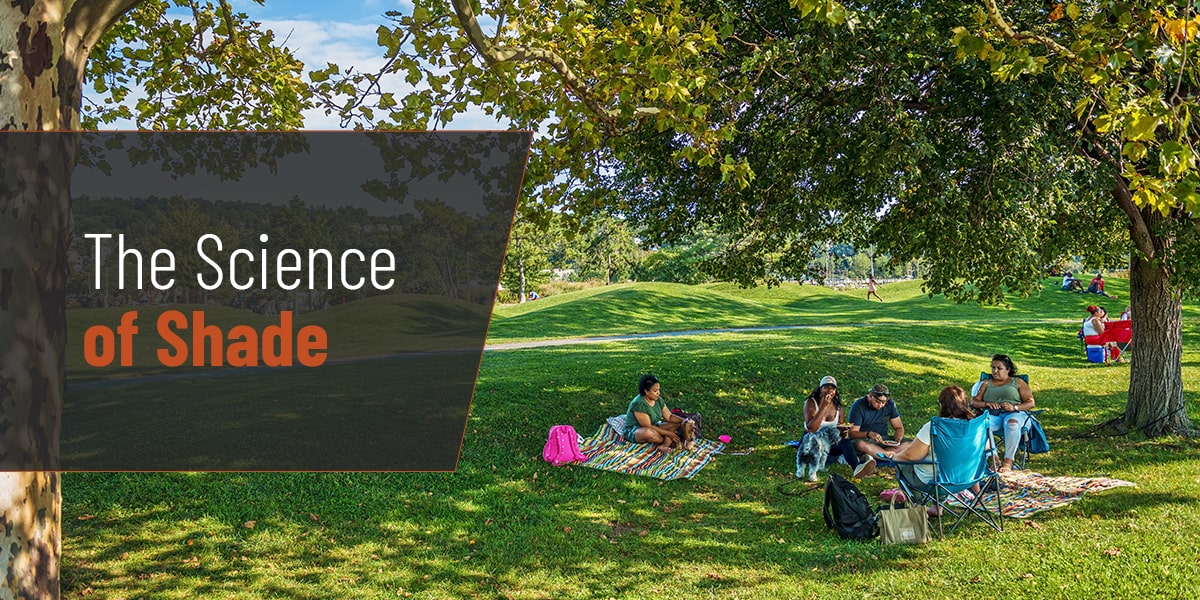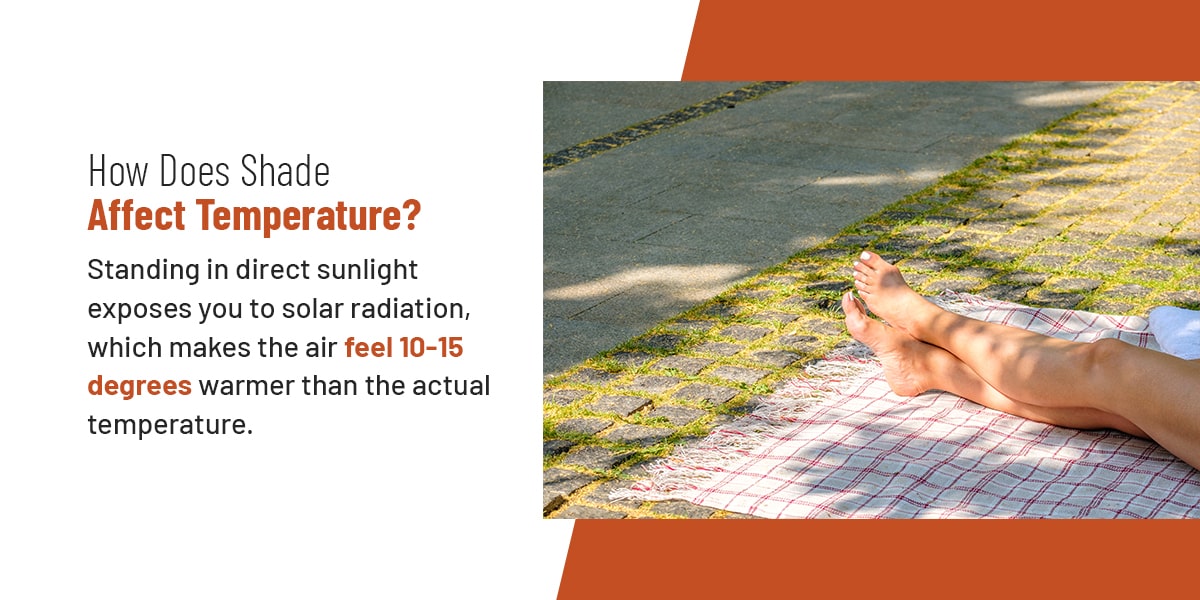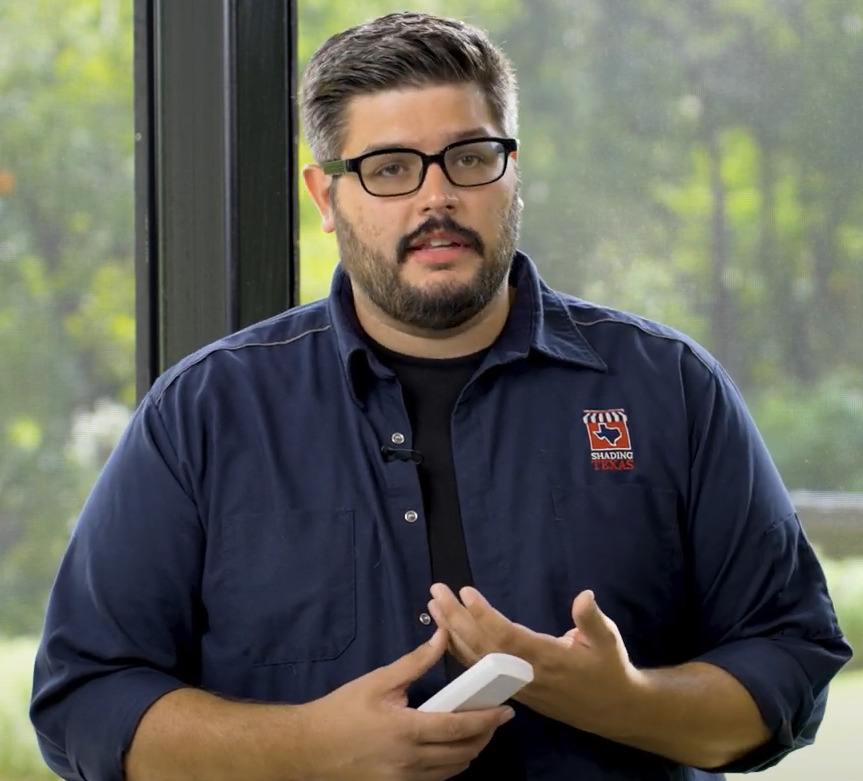
Shade is a fascinating natural phenomenon. Maybe you’ve observed how shade can create interesting patterns on the ground or you enjoyed sitting on a shady patio on a hot Texas day. In this article, we’ll explain more about how shade works and its scientific properties. Read on to learn more about the science of shade!
What Is Shade and How Does It Work?
The shade your patio screens and awnings create does a lot to battle the sun. These are the areas where sunlight and UV rays have trouble penetrating the surfaces that they come in contact with.
What Is Shade?
Shade or a shadow is the absence of light in a space in which light is obstructed by an object. Few objects are solid enough to block out the light required for blackout conditions. Most shade is not a complete absence of light but a severe reduction in the amount of light able to reach the area.
A small point of light creates a simple shadow called an umbra. You can see an umbra when you shine a flashlight on an opaque object and it casts a shadow. The shadow begins and ends and, depending on the distance from the object, creates a sharp silhouette that closely resembles the form of the original object.
Larger light sources like the sun provide light from afar that is diffuse. Diffuse light is light that is not centralized into a single beam. Its energy is spread throughout a large area. Light from large light sources creates several types of shadows:
- Umbra: This is the simple silhouette described earlier.
- Penumbra: The penumbra is the area around the darkest part of the shadow where diffuse light begins to penetrate the shadowed area. It has a medium level of light intensity and provides noticeable temperature changes.
- Antumbra: The antumbra is the area where the length of the shadow ends and begins to fade into the light area. It corresponds with the top of the opaque object. The antumbra extends past the top of the shadow and gradually lets in more light.
How Does Shade Change Throughout the Day?
The angle of the sun affects the length and sharpness of shade. When the day begins, the sunlight is extremely diffuse. As it passes the horizon and moves toward the top of the sky, shadows become shorter and sharper. At midday, shadows are cast directly downward. At this time, only suspended objects such as awnings will create shade.

How Does Shade Affect Temperature?
Standing in direct sunlight exposes you to solar radiation, which makes the air feel 10-15 degrees warmer than the actual temperature. Temperatures are closer to actual air temperatures when you’re in the shade. Staying out of solar radiation also prevents your skin from being damaged by too much sunlight, which can intensify the feeling of heat on the skin.
Why Is Shade Important?
Overexposure to UV light is one of the leading causes of melanoma, the deadliest form of skin cancer. Sun shade is one of the best ways to protect skin from UV damage because it blocks all direct UV light. While you may still receive some indirect UV light, it will be far less damaging to your skin.
Another reason shade is essential is that it can reduce temperatures. During the peak of summer, you may experience heat exhaustion or heat stroke due to high temperatures. Shade can lower temperatures, therefore reducing the danger.
Why Is Garden Sun Shade Important?
Shade is vital for keeping you safe from harmful UV rays and heat, but it’s also essential for protecting other living things from the sun’s power. Garden shade can reduce the temperature in your garden and reduce moisture loss that can kill your plants, especially when outdoor temperatures exceed 100 degrees.
If you’re looking for garden shade ideas, here are some of the best options for you:
- Retractable canopy: A moveable structure attached to your house can protect your nearby garden beds. In the morning, you can let light in, but during the hottest part of the day, you can protect your plants.
- Shade cloth: A shade cloth is like a tarp but lets a limited amount of sunlight through while keeping your garden beds cooler.
- Sail canopy: This fabric covering acts like a shade cloth but often comes in more exciting colors and shapes.
Reducing Heat Exposure With Shade
Shade can reduce temperatures and UV exposure, providing many benefits for you and other living things. Consider adding retractable awnings or sun shades for your patio to keep these spaces cool and comfortable in the hot sun.
Call us today at 737-252-7231 or contact us to learn more about our sun shading products and installation services.

Matt Pierce has been working in the solar shade industry for over 15 years, providing sun protection in the extremes of Alaska and Texas. His dedicated team at Shading Texas will get your the sun solutions you need to enjoy your patios and homes for years to come by blocking out bugs, sun, wind, and rain!
